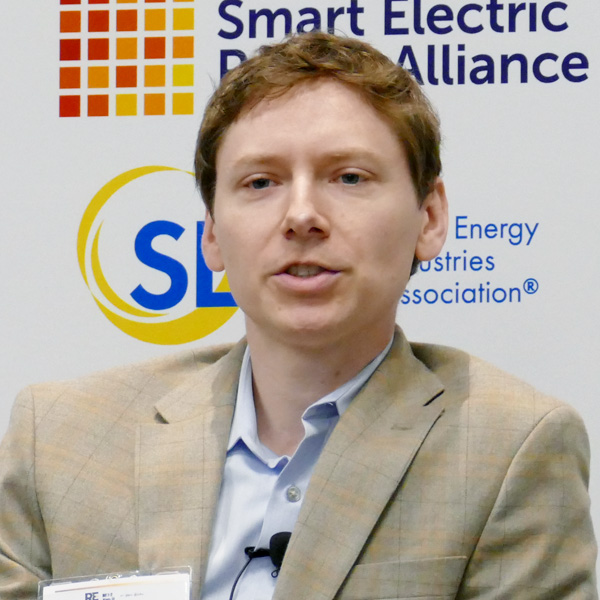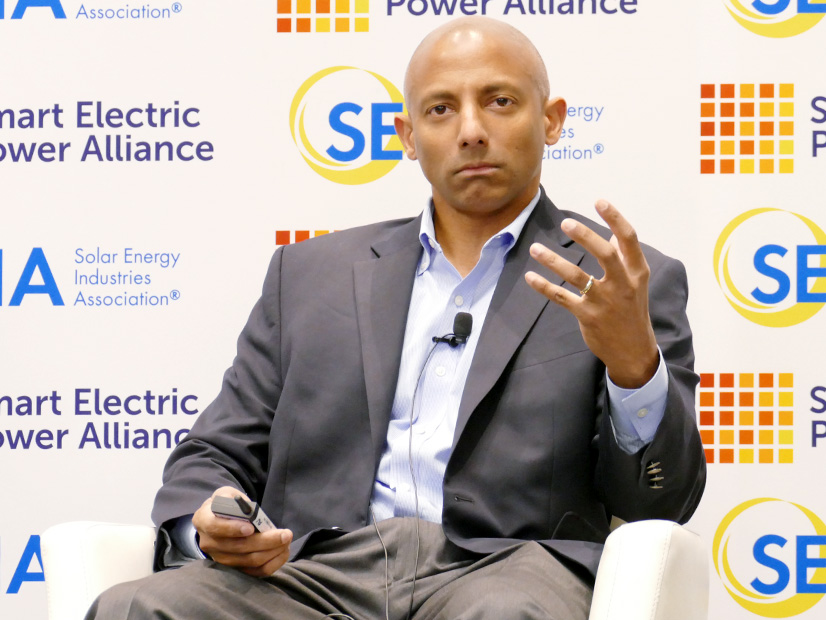ATLANTA — Financing programs are making rooftop solar more affordable and increasing the number of consumers who may be willing to take proactive steps to contribute to decarbonization. But it will take careful utility rate design to ensure electrification comes with carbon reductions, speakers told the RE+ Southeast conference last week.
“We really look at our customers, and consumers generally, as being a big part of the solution,” said Thad Culley, senior manager of public policy for Sunrun (NASDAQ:RUN), which provides residential solar panels and batteries. “They’re both users of energy and potentially producers of energy.
“Anything we could do to influence consumer behavior to make it more compatible with operating a grid in a low carbon way, I think is important. … As we look at load growth coming with electrification — with more customers using heat pumps [and] EVs — we’re going to see that load change and potentially become more carbon-intensive, if we’re not taking measures to shape it,” he said during the opening general session of the conference, sponsored by the Solar Energy Industries Association (SEIA) and Smart Electric Power Alliance (SEPA).
 SEIA CEO Abigail Ross Hopper | © RTO Insider LLC
SEIA CEO Abigail Ross Hopper | © RTO Insider LLC“Solar can be an entry point for this consumer to get more engaged with the grid. When you start adding storage to the mix, not only are you shaping the customers’ load, you can do some really sophisticated things with storage [to] make the home itself a grid interactive resource,” he added. “I’m really bullish on the ability of consumers to play a large role in this.”
“What I heard you say,” joked SEIA CEO Abigail Ross Hopper, “was that solar is the gateway drug to all of these other technologies.”
Lon Huber, vice president of rate design and strategic solutions for Duke Energy (NYSE:DUK), said the utility is pursuing a similar strategy.
“We want to encourage the customer to pair their solar with a variety of different grid-beneficial technologies. That could be battery storage in the near term. We started with smart thermostats. And so if a solar customers pairs their smart thermostat with their solar, they get a 31-cent [per kWh] upfront incentive [to] help defray the costs of that investment. And they’re on [a time-of-use] rate, so if they respond to that they get additional savings.”
A study released by Lawrence Berkeley Lab in March found that although the incomes of solar adopters tend to be higher than those of the general population, 41% of adopters in 2020 had incomes below 120% of their respective area median income (AMI) — a threshold used to define low and moderate income (LMI) households.
“So solar is not just for the wealthy anymore,” said Jim Purekal, manager of market development and policy for SunPower. “There’s better access to financing for solar, specifically now through third-party ownership.”
Need for ‘Dynamic’ Time-of-Use Rates
Huber said Duke included “dynamic” time-of-use rates as part of its recent proposal to change net energy metering rules in North Carolina.
“As we all know, climate change is causing more intense storms; it’s changing the jet stream. So it can lead to polar vortex events, [a] type of event that really drives our peak,” he said. “And once something drives the peak, that drives the capital investment. A lot of dollars are [spent to prepare] for these infrequent storms.
 Lon Huber, Duke Energy | © RTO Insider LLC
Lon Huber, Duke Energy | © RTO Insider LLC“The way we solve that is to make sure that all the resources — whether that’s a large-scale power plant all the way down to something behind the customer’s meter — have the right price signals and are geared towards solving that issue. Because solving that issue lowers the system costs, saves us carbon and enhances reliability.
“And we said, how can we tackle this problem together in a way that makes sense, and that is long term, so that we don’t have a policy battle every few years and have to worry about, ‘Oh, are we hitting a cap?’ Or do we have to do some type of study and pause things. We said let’s build software for the long term that solves a system challenge.”
The resulting proposal includes time-of-use netting, which Huber said is a “hybrid” that makes it easier to calculate savings versus instantaneous, or 15-minute, netting.
“Those polar vortex events, those are very hard to predict,” he said. “I can’t create a TOU rate ahead of time and say, ‘Oh, it will [happen on] January 20.’ So we need these dynamic price signals once there is that type of event to say, ‘Hey, customer, if you can reduce your load you’re gonna save a lot of money.’ And this can get up to 35 cents a kilowatt hour.”



